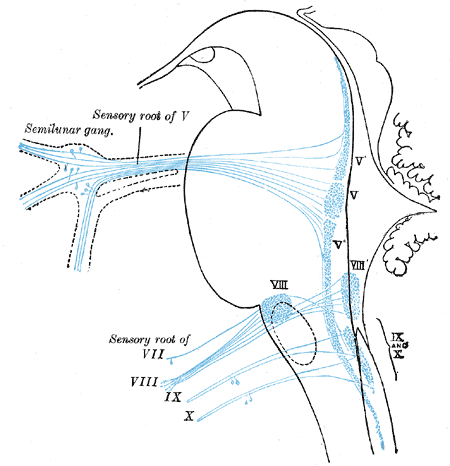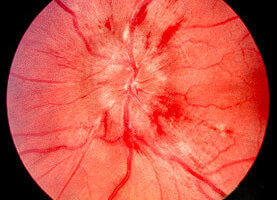
Peripheral Receptors
The trigeminal nerve carries information all the same type of peripheral receptors as both the DC-ML and anterolateral systems.
The trigeminal nerve innervates the face and mouth, and some of what we think of as taste comes from activation of the trigeminal nerve. In addition to sensing the texture of food, taste cues come from temperature and chemical sensitivity. In this regard, the temperature receptors do double duty. Temperature-sensitive ion channels were first identified using binding and sensitivity to the chemical capsiacin, which is the active ingredient in hot peppers. It turns out that foods that are spicy hot actually activate the same ion channels that detect temperature hot.
After the capsciacin receptor was discovered, the cold-temperature receptor was isolated based on its sensitivity to menthol. Both the capsciacin and menthol sensitive channels were from the TRP channel family. So the trigeminal nerve carries both temperature and chemical sensitivity that makes a small contribution to taste.
Sensory Trigeminal Nuclei

There are three trigeminal sensory nuclei, each nucleus having a comparable function to an analogous structure serving the body.
Spinal trigeminal nucleus (in the medulla) receives primarily pain and temperature inputs from the face, and has a similar structure to substantia gelatinosa, the recipient zone of pain and temperature information in the spinal cord. Note that this nucleus receives mostly fibers from the trigeminal nerve, but also somatosensory fibers from the vagus, glossopharyngeal and facial nerves.
The main sensory nucleus of the trigeminal nucleus receives light touch and conscious proprioception (note “conscious” proprioception differentiates its function from the trigeminal mesencephalic nucleus). This is most analogous to the dorsal column-medial lemniscus system.
The mesencephalic trigeminal nucleus is actually considered a “peripheral nerve” since it is part of a reflex system just like “unconscious” proprioceptive peripheral nerves in the rest of the body. While it resides in the CNS, the nucleus has no chemical synapses, and neurons are pseudo-unipolar receiving proprioceptive information from the jaw. Neurons in the nucleus project directly to the motor nucleus of the trigeminal nerve and mediate the jaw reflex (recall that the trigeminal nerve is also motor to muscles of mastication).
Central Tracts
ost-synaptic fibers from spinal trigeminal nucleus and the main sensory trigeminal nucleus contribute to the anterolateral system and medial lemniscus respectively. These fibers project to the VPM, which is the primary thalamic relay nucleus for somatosensation from the head.

